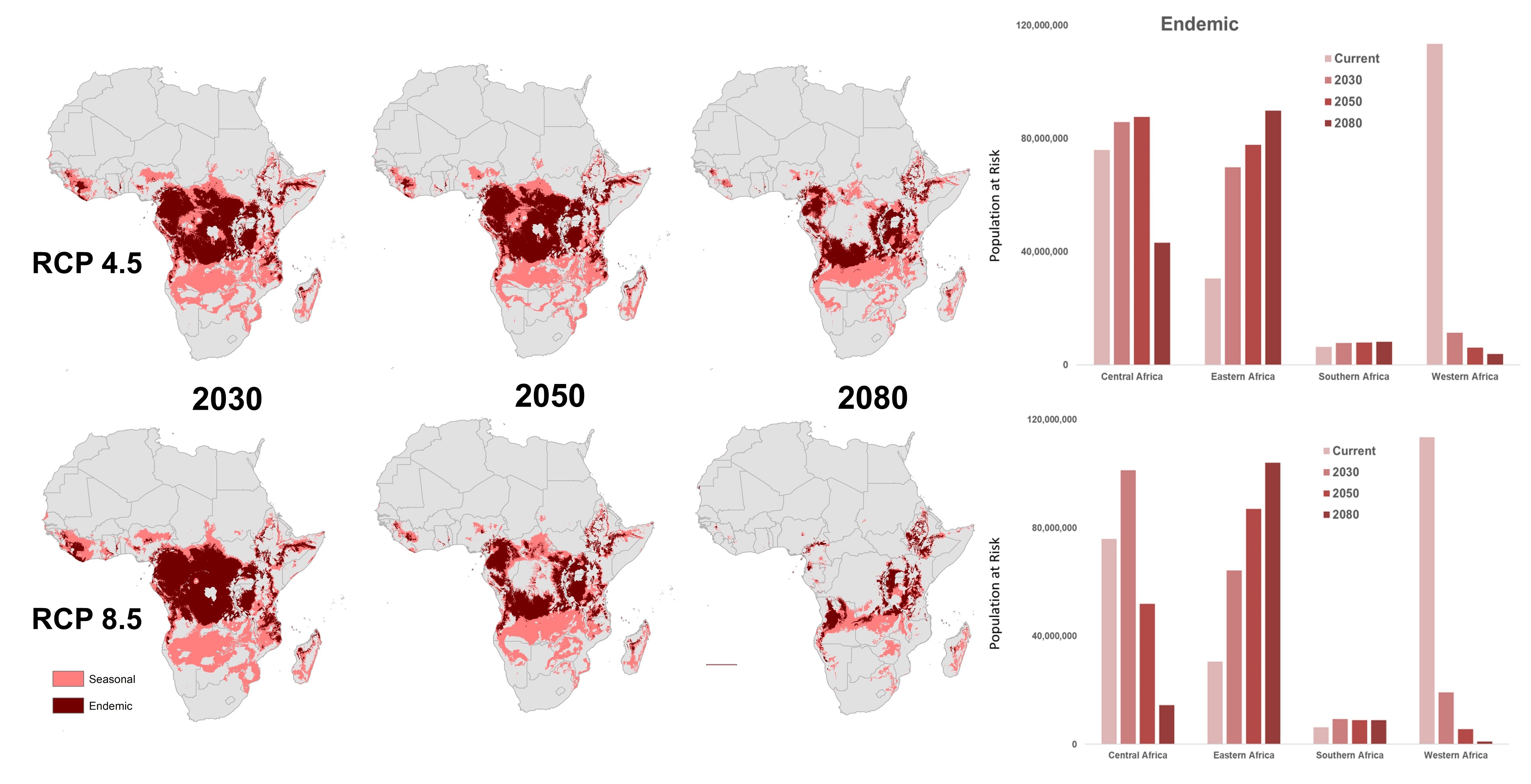
LIPPI, RYAN – Shifting transmission risk for malaria in Africa with climate change: a framework for planning and intervention
Sadie J. Ryan, Catherine A. Lippi, & Fernanda Zermoglio
Article first published online: 01 MAY 2020 Malaria Journal
DOI: 10.1186/s12936-020-03224-6
ABSTRACT:
Background
Malaria continues to be a disease of massive burden in Africa, and the public health resources targeted at surveillance, prevention, control, and intervention comprise large outlays of expense. Malaria transmission is largely constrained by the suitability of the climate for Anopheles mosquitoes and Plasmodium parasite development. Thus, as climate changes, shifts in geographic locations suitable for transmission, and differing lengths of seasons of suitability will occur, which will require changes in the types and amounts of resources.
Methods
The shifting geographic risk of malaria transmission was mapped, in context of changing seasonality (i.e. endemic to epidemic, and vice versa), and the number of people affected. A published temperature-dependent model of malaria transmission suitability was applied to continental gridded climate data for multiple future AR5 climate model projections. The resulting outcomes were aligned with programmatic needs to provide summaries at national and regional scales for the African continent. Model outcomes were combined with population projections to estimate the population at risk at three points in the future, 2030, 2050, and 2080, under two scenarios of greenhouse gas emissions (RCP4.5 and RCP8.5).
Results
Estimated geographic shifts in endemic and seasonal suitability for malaria transmission were observed across all future scenarios of climate change. The worst-case regional scenario (RCP8.5) of climate change predicted an additional 75.9 million people at risk from endemic (10-12 months) exposure to malaria transmission in Eastern and Southern Africa by the year 2080, with the greatest population at risk in Eastern Africa. Despite a predominance of reduction in season length, a net gain of 51.3 million additional people is predicted be put at some level of risk in Western Africa by midcentury.
Conclusions
This study provides an updated view of potential malaria geographic shifts in Africa under climate change for the more recent climate model projections (AR5), and a tool for aligning findings with programmatic needs at key scales for decision-makers. In describing shifting seasonality, it was possible to capture transitions between endemic and epidemic risk areas, to facilitate the planning for interventions aimed at year-round risk versus anticipatory surveillance and rapid response to potential outbreak locations.
Read the full publication at Malaria Journal